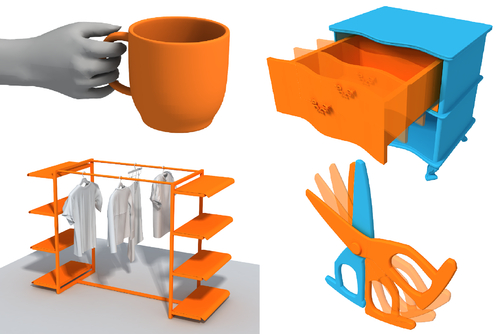Pre-recorded Sessions: From 4 December 2020 | Live Sessions: 10 – 13 December 2020
4 – 13 December 2020
Pre-recorded Sessions: From 4 December 2020 | Live Sessions: 10 – 13 December 2020
4 – 13 December 2020
#SIGGRAPHAsia | #SIGGRAPHAsia2020
#SIGGRAPHAsia | #SIGGRAPHAsia2020











Date: Friday, December 11th
Time: 1:30pm - 2:00pm
Venue: Zoom Room 8
Note: All live sessions will be screened on Singapore Time/GMT+8. Convert your time zone here.
Author(s)/Presenter(s):
Ruizhen Hu, Shenzhen University, China
Manolis Savva, Simon Fraser University, Canada
Oliver van Kaick, Carleton University, Canada
Abstract:
A central goal of computer graphics is to provide tools for designing and simulating real or imagined artifacts. An understanding of functionality is important in enabling such modeling tools. Given that the majority of man-made artifacts are designed to serve a certain function, the functionality of objects is often reflected by their geometry, the way that they are organized in an environment, and their interaction with other objects or agents. Thus, in recent years, a variety of methods in shape analysis have been developed to extract functional information about objects and scenes from these different types of cues.
In this course, we discuss recent developments involving functionality analysis of 3D shapes and scenes. We provide a summary of the state-of-the-art in this area, including a discussion of key ideas and an organized review of the relevant literatures. More specifically, we first present a general definition of functionality from which we derive criteria for classifying the body of prior work. This definition facilitates a comparative view of methods for functionality analysis. Moreover, we connect these methods to recent advances in deep learning, computer vision and robotics. Finally, we discuss a variety of application areas, and outline current challenges and directions for future work.
